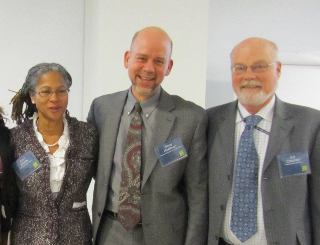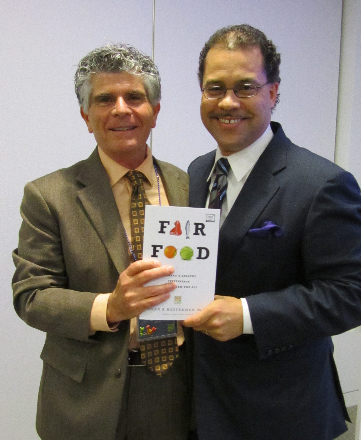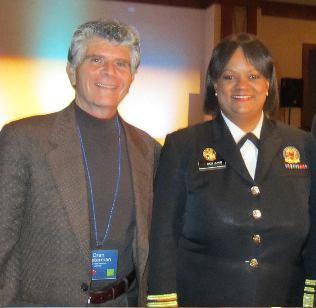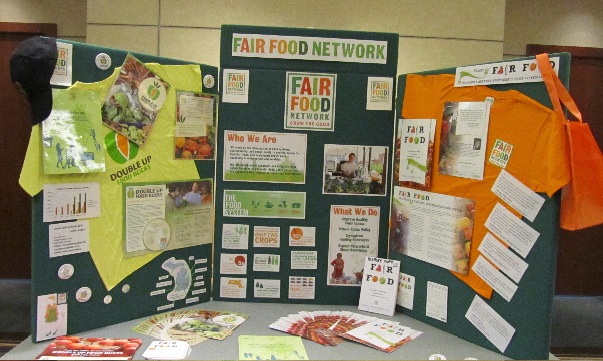Food & Farm Policy: History, Future, and Why I Should Care
Fair Food Network (FFN) hosted an afternoon of farm and food policy discussions for the Kellogg Fellows Leadership Alliance in Washington, DC in March. Panels including USDA leadership, Capitol Hill Agriculture Committee staff, and various other stakeholders offered their perspectives on the political climate in which the Farm Bill will be considered and what is most likely to be successful. The conclusion was that even with serious pressures for fiscal austerity, there are opportunities to pass provisions that will support vibrant regional food systems.
After a brief history of US policy and how the Farm Bill has expanded, from its original intent of ensuring market stability to American farmers in the 1930s to a 15-title omnibus bill with a price tag of almost $300 billion in 2008, the conversation turned to the view from the Administration and Capitol Hill.
The View from Congress and the Administration
Ann Wright, USDA Deputy Under Secretary of Marketing and Regulatory Programs said that the Administration will not offer its own draft bill but will concentrate on implementation of provisions from the last. The hope is that the next bill can build on the existing legislative framework and that costs can be cut by streamlining programs and increasing efficiency. USDA will continue to encourage the development of regional food systems as part of its emphasis on revitalizing rural economies.
Jacqlyn Schneider of the Senate Agriculture Committee and Keith Jones of the House Committee concurred that there is not likely to be a substantial change of direction in the next Farm Bill. The process will probably begin in the Senate.
Senator Stabenow, Chair of the Senate Agriculture Committee, sees the Farm Bill as a jobs bill: the necessity of preserving and creating jobs will underpin all conversations. Stabenow’s guiding principles are: ensuring a safety net for farmers by providing risk management tools, focusing on research and innovation, conserving land and water resources, effective nutrition programs linking farmers and consumers, energy independence, and investment in rural communities and the next generation of farmers. Since Michigan produces so much of the nation’s fruits and vegetables, one can expect robust support for USDA’s specialty crop (fruits, vegetables, and tree nuts) programs.
Ms. Schneider and Mr. Jones both emphasized the crucial importance of language and the frame in which ideas are presented to policy success. Ag policy in DC tends to be bipartisan, with differences often based on geography rather than party affiliation. Rural interests dominate agriculture policy, and the lion’s share of the production is in commodity crops, which are currently enjoying high prices and playing an important part in the export economy. That does not mean that powerful members will not support local food initiatives, but we need to be careful not to present local food systems as the remedy to “a broken system” when many in power do not see the current system as broken.
Schneider used FFN’s Double Up Food Bucks as a key example of the kind of program likely to be successful because it is at a natural nexus between agriculture, health, and rural development. None of the speakers thought that subsidizing fruit and vegetable prices or production was a workable idea.
The stakeholders’ panel emphasized that conservation programs and new plans to support beginning and socially disadvantaged farmers are vulnerable to cuts and that the anti-hunger community will fight to replace stimulus funds to the SNAP program in the Farm Bill.
From Where We Stand
Ferd Hoefner of the National Sustainable Agriculture Coalition (NSAC) explained that conservation programs have grown significantly over the last several years and will soon account for a larger share of Farm Bill spending than commodity programs. As a result they offer a tempting target for budget cutters. The process has begun with cuts to anticipated program growth in 2010 and the 2011 appropriations.

Savi Horne, Ferd Hoefner, and Ed Cooney
Lisa Kelley of the National Council of Farmer Cooperatives (NCFC) concurred that conservation programs are important to their members. Further, she indicated that direct payments will probably be replaced by some other kind of revenue assurance program for farmers.
Savi Horne of the Land Loss Prevention Project emphasized that we find ourselves at an important juncture. There were enormous wins in the last Farm Bill for communities that have historically been discriminated against. Many of the new American farmers are from these classes, and they bring an excitement and vibrancy to the sector, but there is the real possibility of losing the USDA programs that are supporting their growth, which would be “a crushing blow.”
New Voices in the Mix
The afternoon ended with a rousing call to action from Marland Buckner, of Global Strategic Partners, who proposed thinking beyond sustainability to promoting socially, economically and environmentally “regenerative” policy and engaging new people and Congressional committees in the movement for better food policy.
Photos from the Forum

Oran Hesterman and Marland Buckner

Oran Hesterman and Surgeon General Regina Benjamin

Fair Food Network table display







